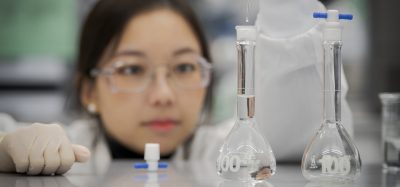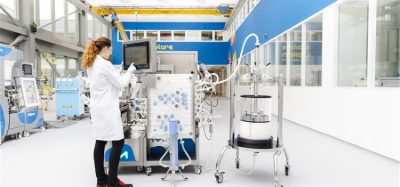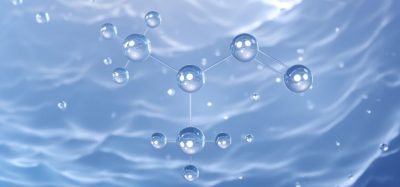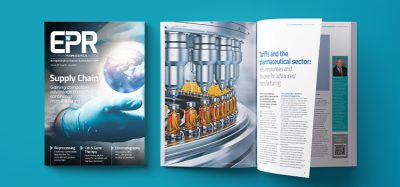Universal detection in high performance liquid chromatography
Posted: 3 July 2015 |
The most commonly used analytical technique for the testing of drug molecules is reversed-phase high performance liquid chromatography (RP-HPLC) with ultraviolet (UV)/visible detection. However, one of the biggest constraints affecting UV/visible detectors is their inability to generate adequate sensitivity for analytes lacking a suitable UV chromophore.


These compounds comprise a surprisingly large group, encompassing natural products, particularly fermentation products, carbohydrates, lipids, certain amino acids, steroids, bisphosphonates, alkylating agents, excipients, polymer, surfactants, etc. (see Figure 1, page 50, for some representative structures). Secondly, it is often assumed that response factors for impurities are the same as for the parent when using UV detection systems, when often they are not1. Accordingly, purity assessments are inevitably compromised to some degree. This short review will look at the use of some newer detection systems and the pros and cons of the various detector types. Hyphenated techniques such as HPLC-NMR and HPLC-MS have been deliberately excluded.
Historically, refractive index (RI), indirect UV/visible or post-column derivatisation (followed by UV/visible detection) and conductivity have all been employed to address the deficiencies in HPLC analysis. In parallel, gas chromatography/flame ionisation detection (GC/FID) has been used as a universal detector for the more volatile analytes. However, these alternative detection approaches also have intrinsic limitations.
Newer detectors for non-chromophoric analytes that have been developed over the past few decades have entered into reasonably common usage. These include the aerosol-based detection systems, e.g., evaporative light scattering detection (ELSD), the closely related nano quantity analyte detector (NQAD), sometimes referred to as condensation nucleation light-scattering detection (CNSLD), corona-charged aerosol detection (CAD), and chemiluminescent nitrogen-specific detection (CLND).
Detector classification according to selectivity
A universal detector is defined as the one which ‘can respond to every component in the column effluent except the mobile phase’2. In contrast, selective detectors are defined as ‘detectors which respond to a related group of sample components in the column effluent’. Finally, specific detectors are defined as, ‘detectors which respond to a single sample component or to a limited number of components having similar chemical characteristics’. It is also widely recognised that no single HPLC detector is ‘capable of distinguishing all possible analytes from a given chromatographic eluent and hence the term universal is often redefined to describe the detection of a diverse range of analytes’3.
The earliest detectors
Differential Refractive Index Detection (RI) detectors were amongst the first of the universal detectors. They are non-destructive in nature and RI is a ‘concentration-dependent bulk property’ that measures the change in the refractive indices between the sample and the mobile phase and which will detect all compounds containing polarisable electrons4. The differential RI detector is amongst the earliest of the HPLC detectors, consisting of separate, temperature controlled sample and reference flow cells, and allowing sample sensitivities of 10-7 refractive index units, equating to detection levels (DLs) of about 0.1%. However, the use of a reference cell precludes the use of gradient separations, since it is difficult to achieve rapid thermal equilibration. Having said that, many adaptations of the basic design have been attempted to try and increase sensitivity, there has been limited success.
Indirect UV/visible detection
Indirect UV/visible chromatography is a process for the indirect detection of non-chromophoric or ‘transparent’ ions, where a highly UV-absorbing counterion (e.g., naphthalenesulfonic acid) is added to the mobile phase. This UV-absorbing counterion is responsible for the indirect detection of the non-chromophoric analyte. Indirect UV/visible chromatography has been used for the separation and indirect detection of many non-chromophoric analyte ions, including impurities and excipients that are commonly used in pharmaceutical formulations5.
Conductivity detectors
Conductivity detectors (CDs) measure the conductivity of the eluent, which will be altered dependent on the concentrations of prevailing ions. CD is used in conjunction with ion chromatography or ion exchange chromatography, for ions with no chromophore, e.g., Na+, K+, Cl–, SO42-, etc. In a conductivity detector the impedance (or resistance) between two electrodes in the flow cell is monitored. Typically, a suppressor column is inserted pre-detector (post-analytical column) to minimise background conductance of the eluent6.
Aerosol-based detectors
The aerosol-based detectors (ELSD, CNLSD/NQAD, CAD) are a family of detectors that have the ability to detect an analyte based on differential volatility compared to the mobile phase. ELSD and CNLSD/NQAD are based on light scattering detection, whereas CAD is based on charged aerosol detection. The aerosol-based detectors utilise a three-stage process, involving (i) nebulisation, (ii) evaporation and (iii) detection. The initial phase involves nebulisation of the eluent in a stream of carrier gas (typically nitrogen), next the mobile phase is removed from the nebulised droplets and finally, the remaining particles (which are less volatile than the mobile phase) are continuously determined by the appropriate detector.
Evaporative light scattering detection
Evaporative light scattering detection (ELSD) involves nebulisation and then evaporation in a drift tube, followed by measurement of the resultant light scattering. The flow rate of the carrier gas and the drift tube temperature need to be optimised depending on the mobile phase constituents. The detector response is proportional to the absolute quantity of analyte present. This technique can be used with gradients and it is insensitive to temperature or flow rate changes. The mobile phase needs to be volatile and tends to be similar to those used for HPLC-MS(n).
ELSD shows a variability of response, even between structurally similar compounds, often attributed to ‘column bleeding’. There is evidence of decreased accuracy as the boiling point of the mobile phase decreases7. This detector has a particle size cut-off and it cannot analyse particles smaller than 0.1 microns3.
Condensation nucleation light scattering detection or nano quantity analyte detector
This is a variant of ESLD. In condensation nucleation light scattering detection or nano quantity analyte detector (CNLSD/NQAD), after nebulisation of the eluent, a saturated stream of solvent is added to the particle-rich carrier gas. The solvent condenses onto the particles, increasing their size and subsequent detectability in the light beam. This increase in particle size enhances the sensitivity 10-100x, with a wider linear range than found in ELSD8.
Chemmalil and co-workers9 used hydrophilic interaction liquid interface chromatography (HILIC) with CNLSD/NQAD detection to quantify sialic acid in glycoproteins, post-acid hydrolysis of the therapeutic protein. This method could be strongly correlated with other analytical approaches, e.g., HPLC with pre-column derivatisation using 1,2-diamino-4,5- methylenedioxybenzene (DMB) or high pH anion-exchange chromatography using pulsed amperometric detection (HPAEC-PAD). The CNLSD/NQAD approach is more efficient than the derivatisation method and more reproducible than the HPAEC-PAD approach. The CNLSD/NQAD method is sensitive having DLs and QLs of 0.32 and 0.86 nmol on column, respectively, and demonstrates appropriate precision (9% RSD) at the DL value.
Corona-charged aerosol detection (CAD)
In corona-charged aerosol detection (CAD) the nebulised droplets are carried into a heated drift tube where they are evaporated and charged using a positive corona discharge before being detected in an electric aerosol detector. A pre-requisite for detection is that the analytes are considerably less volatile than the mobile phase, which in turn limits the choice of the mobile phase. However, certain solvents which cannot be used in typical HPLC (e.g., acetone due to high UV-cut off values of 330nm) can be used in CAD because of their greater volatility. The stationary phase is also limited to columns showing little or no bleeding10. Therefore, it is important to realise that this detector has implications on the choice of both mobile and stationary phases. For instance, HILIC can achieve greater sensitivity than HPLC for the same analytes, which were attributable to the increased volatility of the HILIC mobile phase. CAD was about 10 times more sensitive in the HILIC mode11.
Detector sensitivity is not dependent on specific functionalities within the analyte, therefore a similar detector response across a wide range of different functionalities can be anticipated. However, differences in volatility or ionisability may lead to differences in CAD output. For example, the detector output can be enhanced by a factor of 5-10x when changing from 100% aqueous components to 100% organic constituents, which can be a constraining factor. This can be addressed using post-column counter-gradients and a dual pump system is now commercially available. Typical QLs are between 1-240ng on column12, which is higher than the corresponding ESLD system12,13.
Unlike UV/visible detectors, the CAD response is not directly linear over a broad dynamic range14, but has been shown to be linear over two orders of magnitude, which ensures that the detector is suitable for impurity assays using an external standard approach13.
Chemiluminescent nitrogen-specific detection
Chemiluminescent nitrogen-specific detection (CNLD) is a nitrogen-specific detector utilising the combustion of the mobile phase effluent in an oxygen rich furnace at 1050°C to facilitate the conversion of all organic species to their corresponding oxides, i.e., carbon, nitrogen, sulphur oxides and residual water. Nitric oxide is then reacted with ozone to yield nitrogen dioxide in the excited state, which will emit photons of pre-determined energy when returning to the ground state15. This chemiluminescent reaction is directly proportional to the amount of nitrogen present in the analyte (on a molar basis). With the exception of N=N and free elemental nitrogen, the response is independent of structure and this can be used to quantitate the amount of the known analyte in the mixture, in the absence of a reference standard of the analyte. By using a UV/visible detector in series with a CNLD detector the RRF (relative response factor) of each peak can be assessed. For unknown impurities, HPLC-MS(n) can be used to determine the exact mass/formula. CLND is constrained to non-nitrogen containing eluents, thus precluding acetonitrile and amine-modifiers. In addition, CLND requires the use of volatile buffers.
Reasonably good accuracy (±20% vs. mass recoveries) is achievable for compounds of widely different structure16,17 using CLND. This approach is well aligned to the quantitation of related substances (impurities and degradants), eliminating the requirement for individual reference standards17. However, the limited linear dynamic range is an impediment. Utilising a secondary dilution of the reference standard at similar concentrations to the impurities of interest can address this failing. Peak tailing is much more pronounced with CNLD compared to classical UV detection. The complexity of the detector is high with implications for operator training, maintenance overheads and use in a QC environment7. Flow rates are low and the nebulisers/furnace can become contaminated with residue build up15.
Future perspectives on universal detection
Much of the technological advancements in universal detection have been focussed in a number of areas including improvements in hardware, software and integrative technology used to collect and analyse the data (much of this has already been described in earlier sections) and hyphenation of complimentary detection modes together to enhance sensitivity and broaden selectivity.
The latter approach involving coupling complimentary detectors together can offer significant advantages in universal detection, particularly where samples are composed of mixtures of UV and non-UV-absorbing congeners. This is exemplified in ion chromatography (IC), where analysing both inorganic and organic charged compounds can be enhanced and their selectivity broadened by the inclusion of suppression systems to allow the coupling of spectrophotometric detectors with universal nebulising systems.
Suppression in IC can be achieved using either chemical (via Anion-ICE MicroMembrane Suppressor; AMMS) or electrolytic (via Anion Self-Regenerating Suppressor; ASRS) to connect multiple detectors, thus avoiding interferences and incompatibility due to non-linear responses, reduced baseline drift etc. Hyphenated approaches have been applied to the analysis of carbohydrates in glycoproteins via LC-MS-CAD18 and trace impurity analysis using GC-ICP-MS19.
Conclusion
As is often the case there is no single detector that is universally appropriate for all non-UV absorbing analytes. In many ways, indirect UV/visible detection is a very pragmatic approach, utilising all the perceived advantages of the UV/visible detector, yet being able to detect non-chromophoric analytes. Its biggest failing is poor sensitivity. A similar conclusion can be made for the venerable RI detector. However, some of the more recent applications give some hope that the failings of poor sensitivity and selectivity (the latter arising from the non-compatibility with HPLC gradients) can in time be addressed. The conductivity detector is the detector of choice in ion exchange chromatography for the separation and quantitation of anions and cations.
However, the need for specific equipment and columns and the requirement to suppress the latent conductivity of the mobile phase ensures that it will continue to have niche applications only. The aerosol light scattering detectors (ELSD and CNLSD) have shown wide applicability, but the lack of reproducibility and the non-linear signal response (typically log-linear) have caused operating issues. CAD has addressed many of these issues and in tandem with HILIC is extremely sensitive. However, it still requires volatile mobile phases. CNLD is equally sensitive to CAD, and is not constrained by volatile buffers; however, it is restricted to nitrogen containing compounds and cannot use acetonitrile or amine modifiers in the mobile phase. It is therefore up to the analyst to weigh up the pros and cons (see Table 1) of each detector and select the most appropriate option for their particular needs. It is quite common to use a combination of detectors, e.g., UV, RI and aerosol-based detectors.
References
- Sun, P., Wang, X., Alquier, L., Maryanoff, C.A. Determination of relative response factors of paclitaxel with high performance liquid chromatography equipped with ultraviolet and charged aerosol detectors. J. Chromatogr. A., 1177, 2008, 87-91.
- Classification of detectors. http://iupac.org/publications/analytical_compendium/Cha09sec241.pdf. Accessed on 10th March 2015.
- Joshi, P.B., Bhoir, S.I., Bhagwat, A.M. Trends in universal detection in high performance liquid chromatography. Separation Science
- Wade, J.H., Bailey, R.C. Refractive index-based detection of gradient elution liquid chromatography using chip-integrated microring resonator arrays. Anal. Chem. 86, 2014, 913-919
- Breuzovska, K., Dimitrovska, A., Kitanovski, Z., Petrusevska, J., Ribarska, J.T., Jolevska, S.T. Development of an ion-pair reversed-phase HPLC method with indirect UV detection for determination of phosphates and phosphites as impurities in sodium risedronate. J AOAC Int., 93(4), 2010, 1113-1120 http://www.ncbi.nlm.nih.gov/pubmed/20922941. Accessed on 10th March 2015.
- Fernando, P.N., McLean, M.A., Egwu, I.N., deGuzman, E., Weyker, C. Analysis of residual trifluoroacetic acid in a phosphate-buffered saline matrix by ion chromatography with suppressed conductivity detection. J. Chromatogr. A. 920, 2001, 155-162
- Lane, S., Boughtflower, B., Mutton, I., Paterson, C., Farrant, D., Taylor, N., Blaxill, Z., Carmody, C., Borman, P. Towards single-calibrant quantification in HPLC. A comparison of three detection strategies: Evaporative light scattering, chemiluminescent nitrogen, and proton NMR. Anal. Chem. 77, 2005, 4354-4365
- Swartz, M. HPLC Detectors: A brief review. J. Liq. Chromatogr. Rel. Tech. 33, 2010, 1130-1150
- Chemmalil, L., Suravajjala, S., See, K., Jordan, E., Furtado, M., Sun, C., Hosselet, S. A novel approach for quantitation of nonderivatized sialic acid in protein therapeutics using hydrophilic interaction chromatographic separation and nano quantity analyte detection, J. Pharm. Sci. 2014, DOI 10.1002/jps.24093
- Almeling, S., Ilko, D., Holzgrabe, U. Charged aerosol detection in pharmaceutical analysis. J. Pharm. Biomed. Anal. 69, 2012, 50-63
- Mitchell, C.R., Bao, Y., Benz, N.J., Zhang, S. Comparison of the sensitivity of evaporative universal detectors and LC/MS in the HILIC and the reversed-phase HPLC modes. J. Chromatogr. B. 877, 2009, 4133-4139
- Vervoort, N, Daemen, D., Török, G. Performance evaluation of evaporative light scattering detection and corona charged aerosol detection in reversed phase liquid chromatography. J. Chromatogr. A., 1189, 2008, 92-100
- Nováková, L., Lopez, S.A. Solichova, D., Satinsky, D., Kulichova, B., Horna, A., Solich, P. Comparison of UV and charged aerosol detection approaches in pharmaceutical analysis of statins, Talenta, 78, 2009, 834-839
- Dixon, R.W., Peterson, D.S. Development and testing of a new detector for liquid chromatography based on aerosol charging. Anal. Chem. 74, 2002, 2930-2937
- Nussbaum, M.A., Baertschi, S.W., Jansen, P.J. Determination of relative UV response factors for HPLC by use of a chemiluminescent nitrogen specific detector. J. Pharm. Biomed. Anal. 27, 2002, 983-993
- Taylor, E.W., Qian, M.G., Dollinger, G.D. Anal. Chem. 70, 1998, 3339-3347.
- Liang, X., Patel, H., Young, J., Shah, P., Raglione, T. The practical application of implementing the equimolar response principal of chemiluminescent nitrogen detection in pharmaceutical analysis. J. Pharm. Biomed. Anal. 47, 2008, 723-730
- Hvizd, M.G., Bailey, B., Crafts, C., Plante, M., Acworth, I., Simple Separation and Detection Techniques for the Analysis of Carbohydrates, Thermo Scientific , 2011
- Geiger, W.M., Raynor, W.W., ICP-MS: A Universally Sensitive GC Detection Method for Specialty and Electronic Gas Analysis, Spectroscopy, Feb 01, 2009
Biographies
Dr Elder has BSc and MSc degrees in chemistry from Newcastle upon Tyne, before moving to Edinburgh to study for a PhD in Crystallography. He is a visiting professor (King’s College, London). Dr Elder has 37 years’ experience at a variety of different pharmaceutical companies (Sterling, Syntex and GSK). He is currently a director within the product development group in GSK R&D. Dr Elder is a member of the British Pharmacapoeia (Expert Advisory Group PCY: Pharmacy), a council member of the Analytical Division, Royal Society of Chemistry (RSC), UK and a council member of the Joint Pharmaceutical Analysis Group, UK. He is a fellow of the RSC (FRSC) and a member of the Royal Pharmaceutical Society (SRPharmS). He has co-edited one book on the Analytical Characterisation and Separation of Oligonucleotides and their Impurities.
Phil Borman is a Chartered Chemist with more than 18 years of experience in the pharmaceutical industry, having obtained a Masters in Chemistry from UMIST (Manchester) University and a Masters in Industrial Data Modelling from De Montfort (Leicester) University. Phil is currently accountable for the provision of QbD Support (with an emphasis on Analytical QbD) across multiple late-phase project teams. Phil pioneered the adaptation of QbD principles to Analytical methods and has published widely in the field of Analytical Chemistry.
Dr Okafo has a BSc (Joint Honours) in Chemistry and Biochemistry and a PhD in Chemical Carcinogenesis from at Imperial College of Science, Technology and Medicine, London. Dr Okafo completed a Postdoctoral Research Fellowship at the University of Toronto in nitrosamine-induced chemical carcinogenesis. Dr Okafo has 25 years’ experience at GlaxoSmithKline, where he is a Consultancy Director and Drug Discovery Project Leader. He has led numerous drug development projects, co-authored regulatory documents, been an invited speaker at international conferences and has published 45 papers, authored three book chapters and is co-inventor of two patents covering a wide range of analytical and separation sciences areas applied to small molecules, proteins, oligosaccharides and DNA. He has co-edited one book on the Analytical Characterisation and Separation of Oligonucleotides and their Impurities. Dr Okafo a Member of the Royal Society of Chemistry (MRSC), an Associate of the Royal School of Chemistry (ARCS) and Chair of the Separation Science and Technology Group at the Society for Chemistry in Industry (SSTG/SCI).









